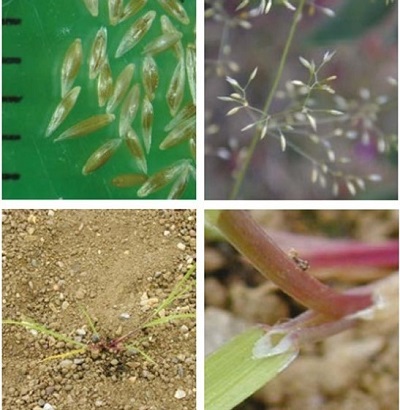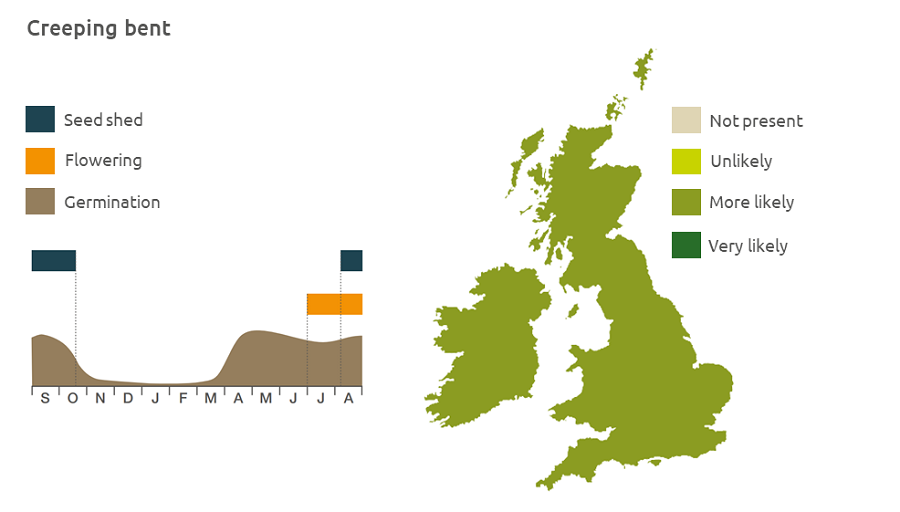- Home
- Knowledge library
- Distribution and biology of creeping bent in the UK
Distribution and biology of creeping bent in the UK
Creeping bent is a grass weed that can affect crop headlands. Find out how to identify and control it.
Overview
Creeping bent (Agrostis stolonifera) can be a weed of headlands, but seldom goes far into arable fields. The plants can overwinter. In arable fields propagation by detached shoots is an important means of spread.
- It has value to biodiversity
Description
It is a close-tufted, perennial grass 8–40 cm tall, spreading by means of fine stolons which produce small roots when in contact with water or moist soil. Leaves are long, narrow and pointed. The flowerhead forms an open dainty cylinder.
Key features
Plant: Leaves are green or greyish-green and hairless; sheaths are rounded and smooth.
Flowers: The flowerheads are upright, cylindrical and usually open.
Lookalikes
Creeping bent may be confused with black bent: creeping bent has a narrower, tighter flowerhead, and spreads by stolons not rhizomes, forming a loose tuft.

Location and life cycle

Geographic distribution
Creeping bent grows throughout the British Isles up to an altitude of 950 m. It tolerates a wide range of habitats from salt marshes to sand dunes and grassland to arable.
Soil type
It is found on all soil types, from wet to dry, heavy or light soils.
Seed statistics
- Seed weight: 0.067 mg
- Seeds/head: 100
- Seeds/plant: 1,000–10,000
Management
Spring cropping can reduce the vigour. Reasonable control of creeping bent stolons can be achieved with glyphosate, most effectively in uncropped land or summer fallows, but pre-harvest in early-harvested crops. Some residual herbicides may affect seedlings. Early cultivations can stimulate shed seed to germinate, so stale seedbeds may be used to control the young germinating plants, which can be killed by subsequent cultivation.
For advice on herbicides, please speak with your agronomist or adviser.
When was this information last updated?
This page is based on content from the encyclopaedia of arable weeds publication. Since it was first released in 2008, the publication has been redesigned several times but not revised. However, it remains a good foundation for general information on the distribution and biology of weeds.

